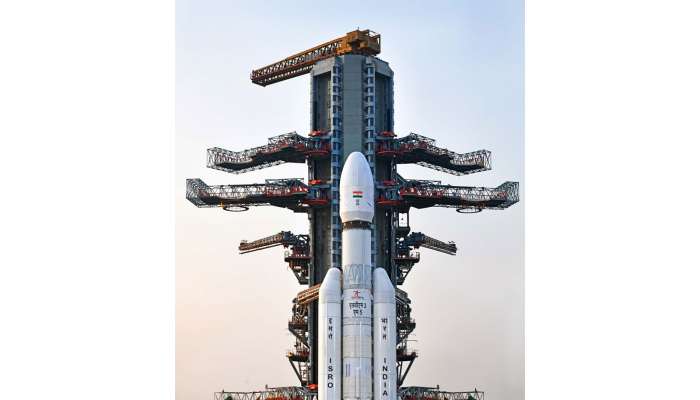
Sriharikota: Indian Space Research Organisation (ISRO) is scheduled to launch the Indian Navy's GSAT 7R (CMS-03) communication satellite on Sunday evening. The indigenously developed satellite will be India's heaviest communication satellite to date, weighing at around 4,400 kg.
The launch is set to take place from the second launch pad of Satish Dhawan Space Station in Sriharikota at 5:26 PM. The launch will be streamed live on ISRO's YouTube channel.
The satellite would strengthen Navy's space-based communications and maritime domain awareness capabilities with the indigenous state-of-the-art components developed specifically to meet the Indian Navy's operational requirements.
"This satellite is India's heaviest communication satellite to date, weighing approximately more than 4,400 kg, and includes many indigenous state-of-the-art components developed specifically to meet the Indian Navy's operational requirements," the Indian Navy said.
CMS-03 is a multi-band communication satellite that will provide services over a wide oceanic region including the Indian landmass, according to ISRO.
The satellite will be launched by the famous LVM3 launch vehicle, which landed India successfully on the lunar South Pole in the Chandrayaan-3 mission. This will be the vehicle's fifth operational flight.
"CMS-03, weighing about 4400kg, will be the heaviest communication satellite to be launched to Geosynchronous Transfer Orbit (GTO) from Indian soil. The previous mission of LVM3 launched the Chandrayaan-3 mission, where in, India became the first country to land successfully near the lunar south pole," ISRO said in a statement.
The launch vehicle had been assembled earlier and has been on the launch pad since October 26 for pre-launch operations.
The LVM3-M5 launch will have 8 sequences, with the CMS-03 being separated from the vehicle at an altitude of around 179 kilometre, at a velocity of around 10 km per second.
The launch vehicle has a height of 43.5 meters, having a lift off mass of 642 tonnes total. The vehicle uses three stages of propellants to enable the satellite to reach the Geo-synchronous Transfer Orbit (GTO).